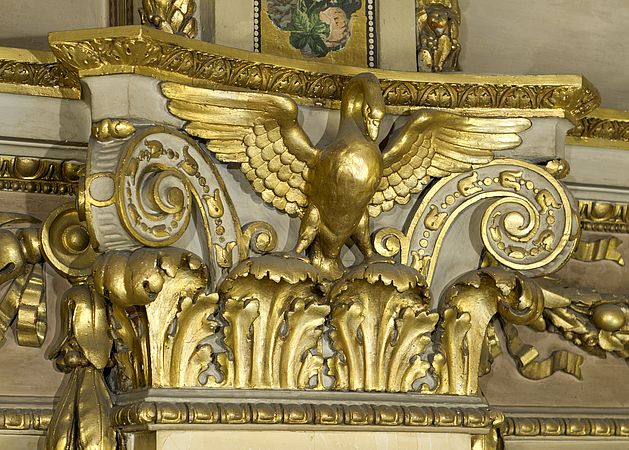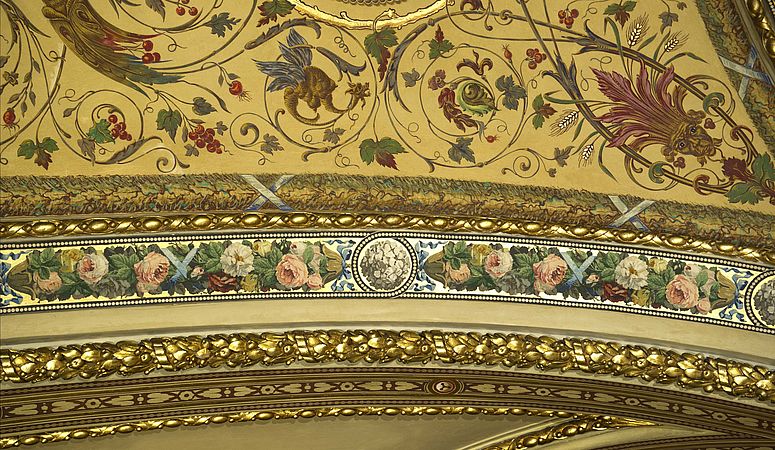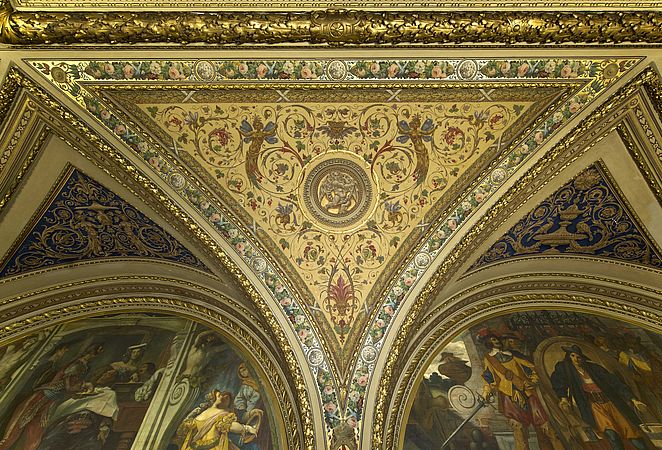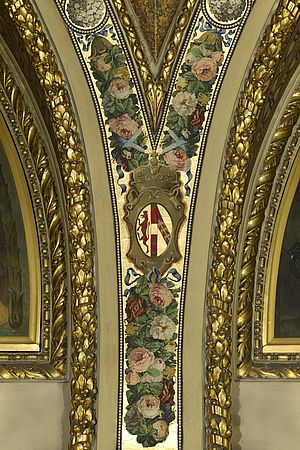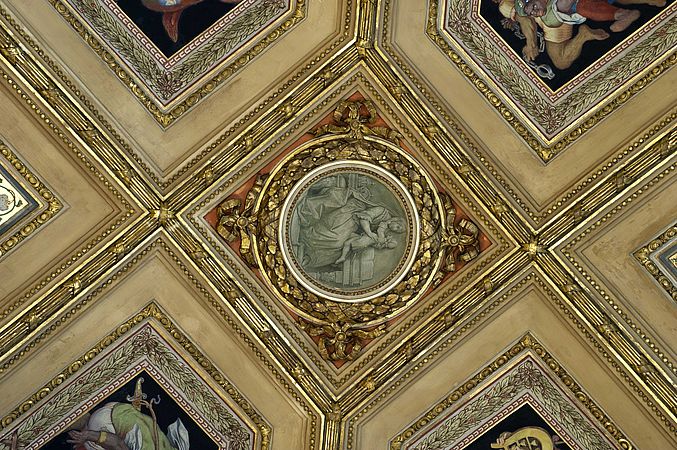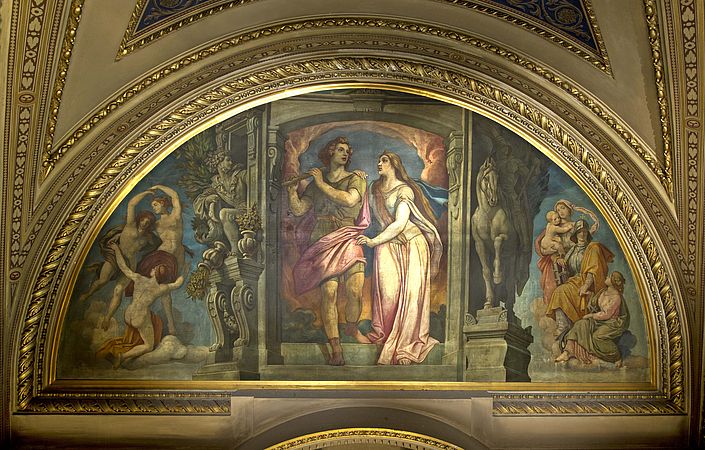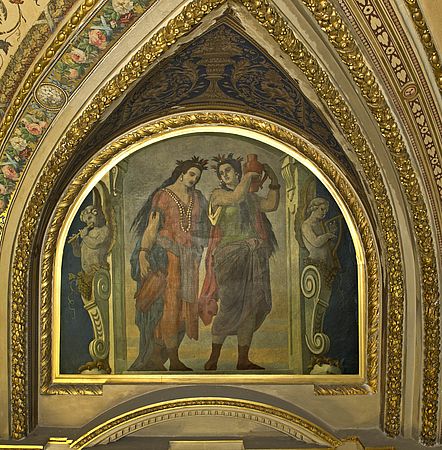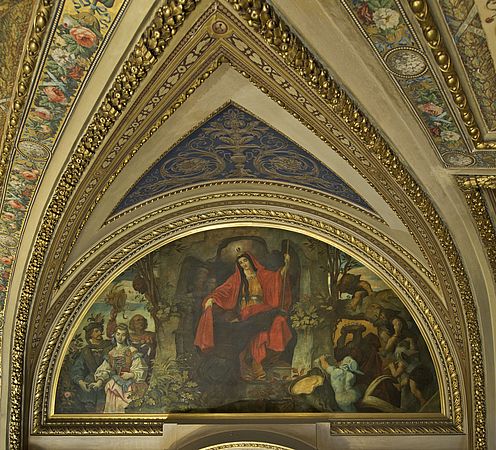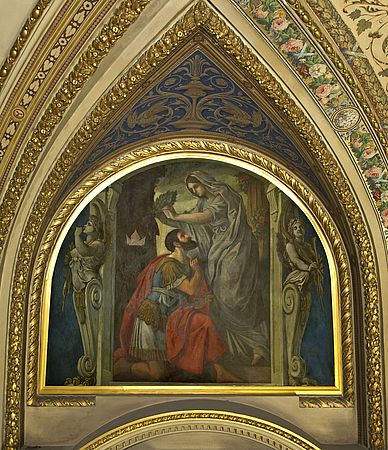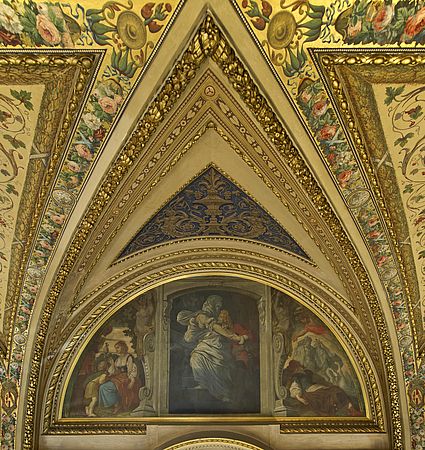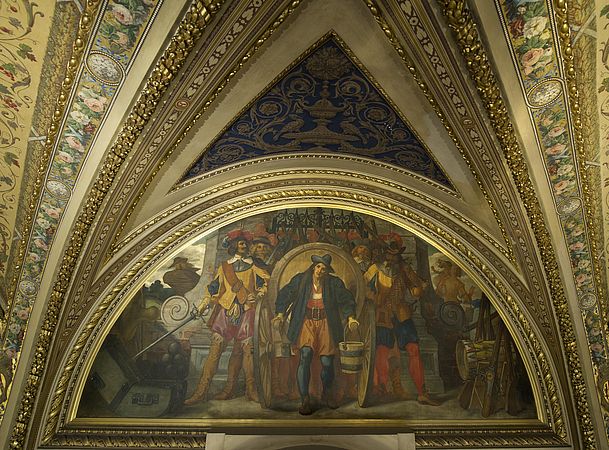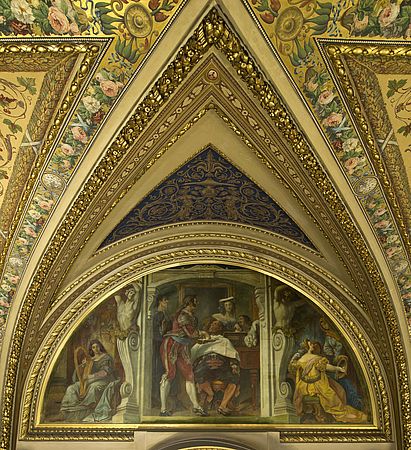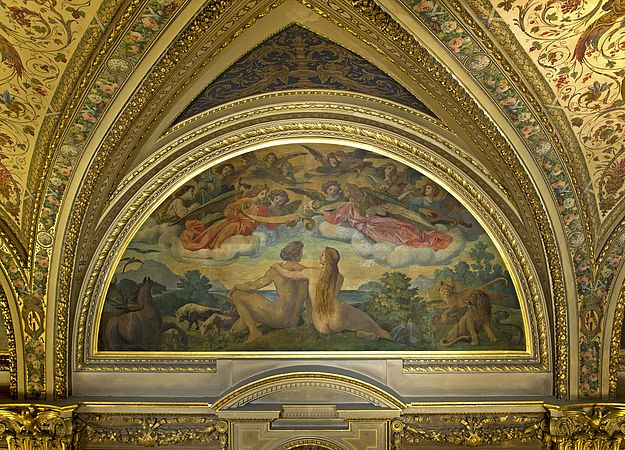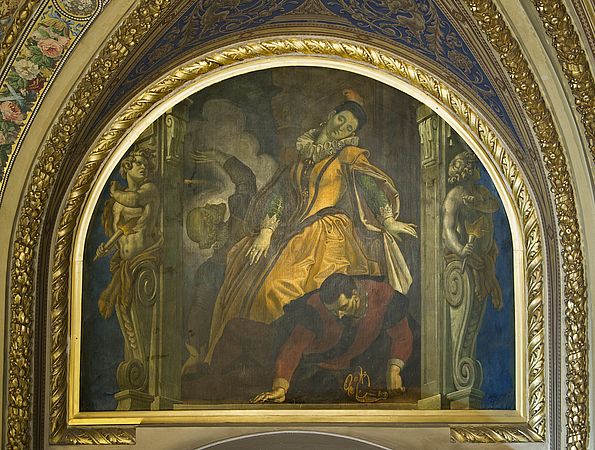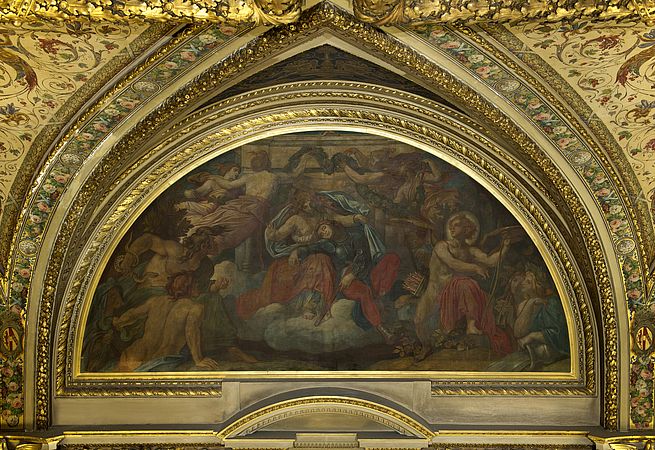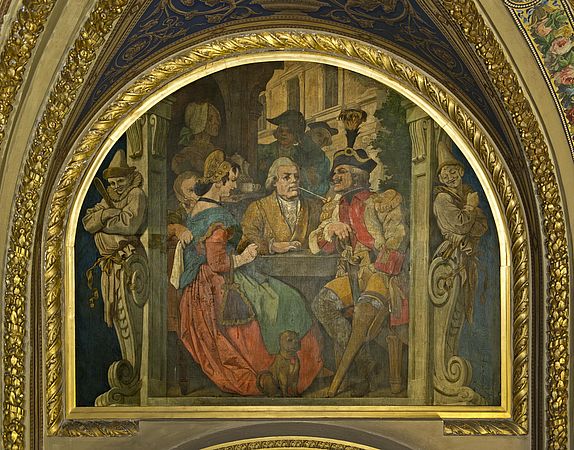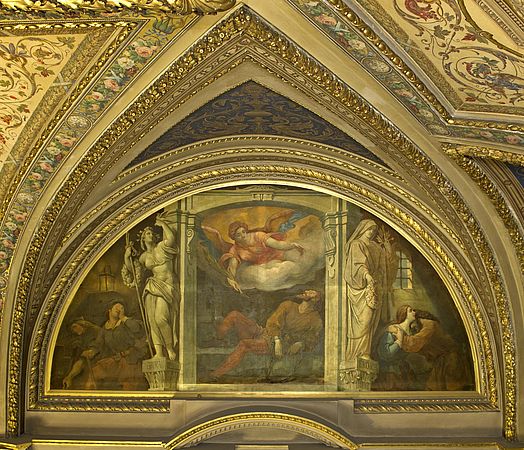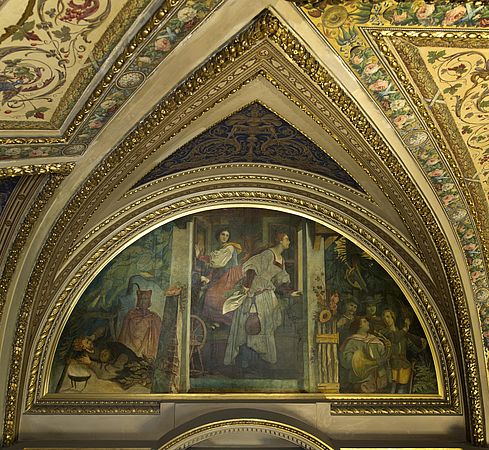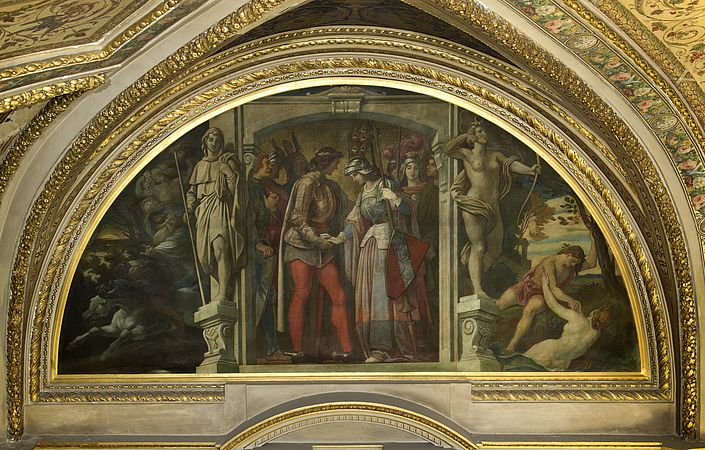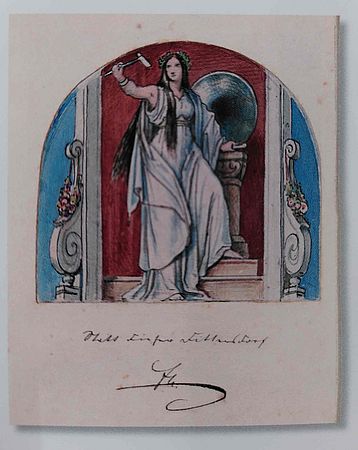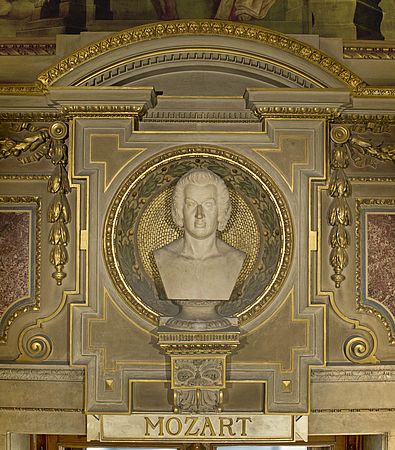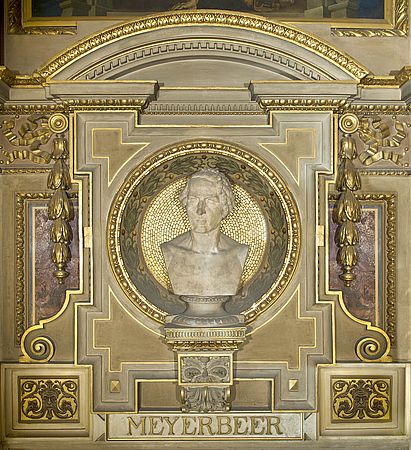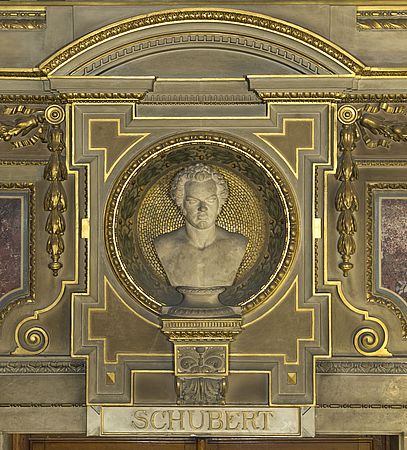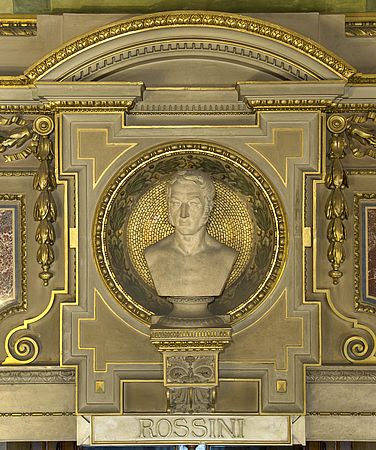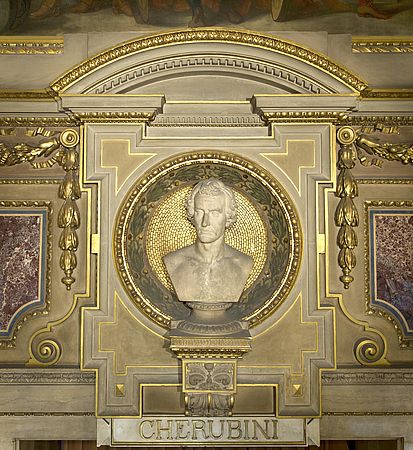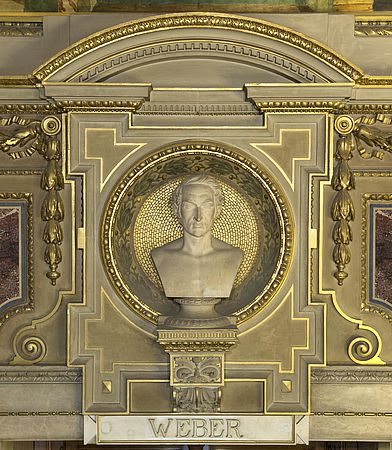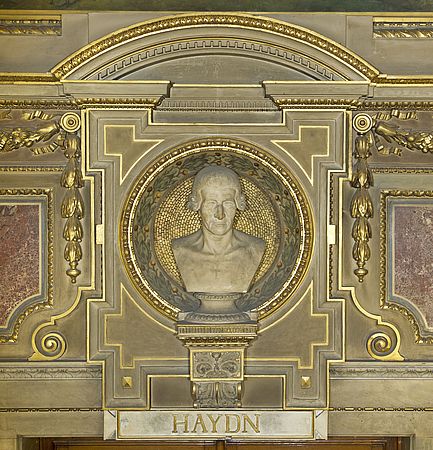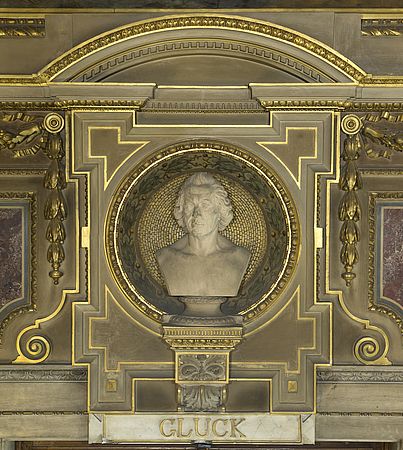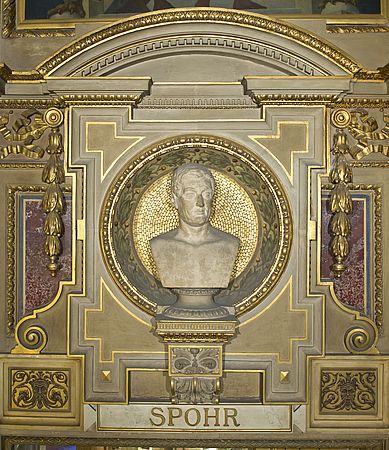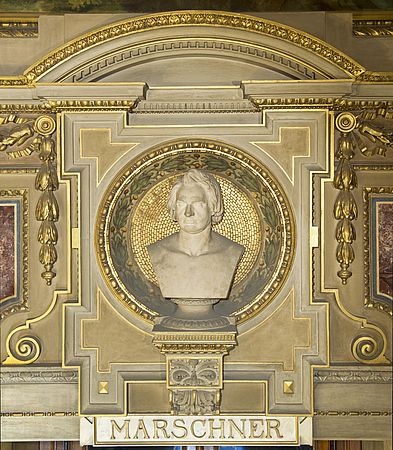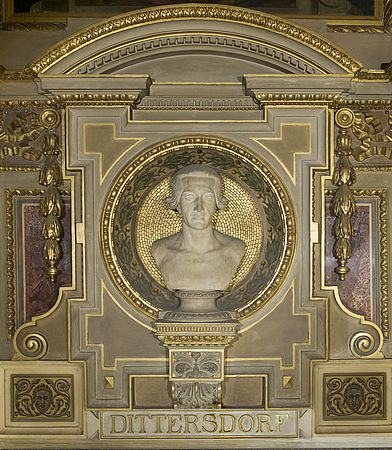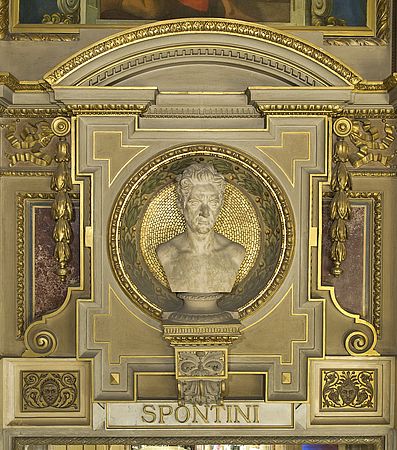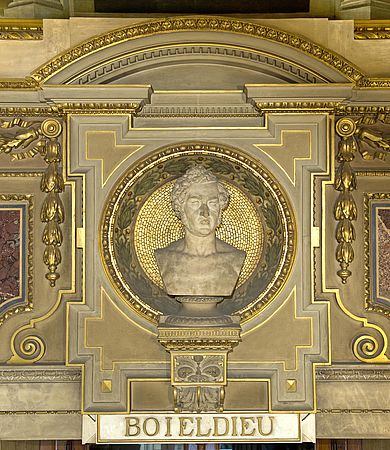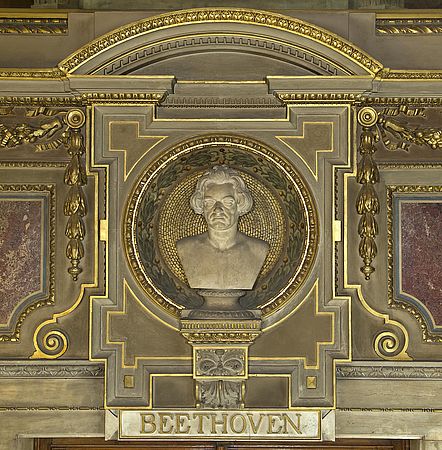Painterly Design
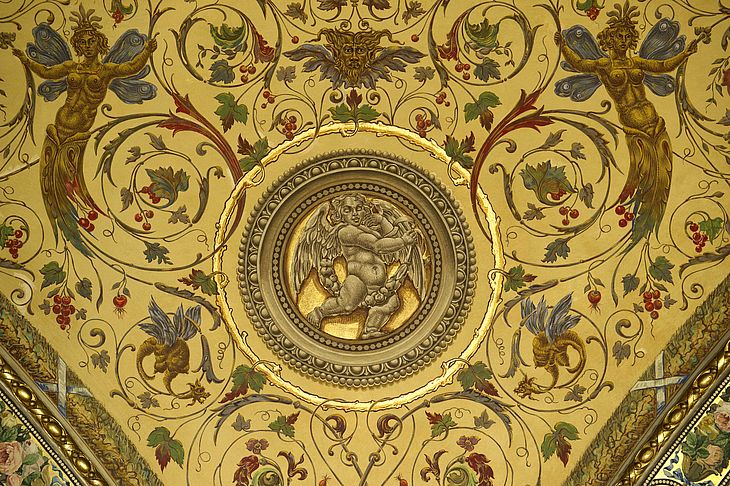
The 14 lunette areas of the Schwindfoyer show scenes from operas and pieces of music that were seen as essential pillars of the repertoire when the opera house was built in 1869. Busts of the respective composers have been added to the individual paintings. The selection of the works was made by a commission headed by the famous Austrian music critic Eduard Hanslick (1825-1904) and, compared to today, shows very clearly the changes in what was originally assumed to be an obligatory performance canon. The depiction of Doctor and Pharmacist by Carl Ditters von Dittersdorf, however, did not come about at the request of the commission: Emperor Franz Joseph, who was very interested in the design of the Opera House, rejected a draft for Bellini’s Norma and asked for »Dittersdorf instead«
Moritz von Schwind was responsible for the cartoons of the individual scenes as well as for the two ceiling paintings »The Victory« and »The Battle for the Wreath«. Another artist, however, is responsible for the numerous flower motives on the walls: the Austrian, multiple award-winning plant, animal and ornament painter Friedrich Sturm (1823-1898), who also intermittently taught at the Vienna University of Applied Arts.
In 2010, this splendour-filled room even received stage honors: director Claus Guth and his set designer Christian Schmidt had the Wartburg act of their Tannhäuser production be performed in a replica of the Schwindfoyer, thus creating an exciting link between the building and the performance.
For more information about the lunettes, click on the images below.
